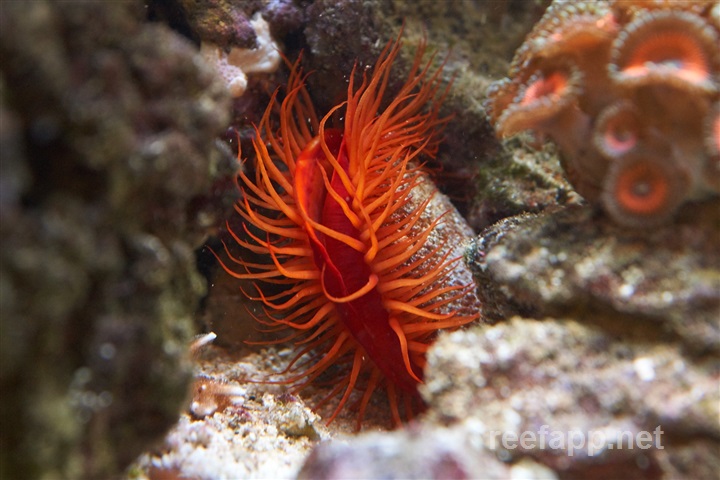Ctenoides scaber


| Latin name | Ctenoides scaber |
|---|---|
| Local name | Flame scallop |
| Family | Limidae - Ctenoides |
| Origin | East Indian Ocean, The Mexican Golf |
| Max length | 9 cm (3.5") |
| Minimum volume |
50 l (13 gal) |
|---|---|
| Hardiness |
Average |
| Suitable for aquarium |
Experience, preparation and extra care required |
| Reef safe |
Always reef safe |
| Aggressiveness | Peaceful |
| Recommended |
Phytoplankton |
|---|
This species is hard to keep alive and thriving.
This species needs good hiding places, for example, between live rocks.
This "scallop" filters the water for and receives all its nourishment from, phytoplankton primarily, but zooplankton is also part of its diet.
Unlike Tridacna it cannot live of photosynthesis.
For its continual well being, it is necessary to feed it large amounts of phytoplankton in the aquarium, or to target feed it.
If it doesn't receive sufficient food, it will likely starve to death after 6-10 months.
Their life expectancy is short (only up to 4 years), therefore if one buys a fully grown specimen it might die if age short after purchase, as it is difficult to determine their age.
The primary food source should be phytoplankton 5-40 µm and secondary, should be zooplankton
This Scallop can move about the aquarium by opening and closing its shell, and will therefore not stay where the aquarist put it.
They will often sit in a well protected space between rocks, so it might be difficult to see and feed it.
If ones tries to move it a lot, it could die from stress.
Also known as Lima scabra.
Rob Toonen. 2002. Invertebrate Non-Column: Flame Scallops - Advanced Aquarist - (English)
Bob Fenner. Bivalves: Clams, Oysters, Mussels... Class Bivalvia - Wet Web Media - (English)
Ronald L. Shimek. 2004. Marine Invertebrates (PocketExpert Guide) - TFH Publications / Microcosm Ltd. - (English)

